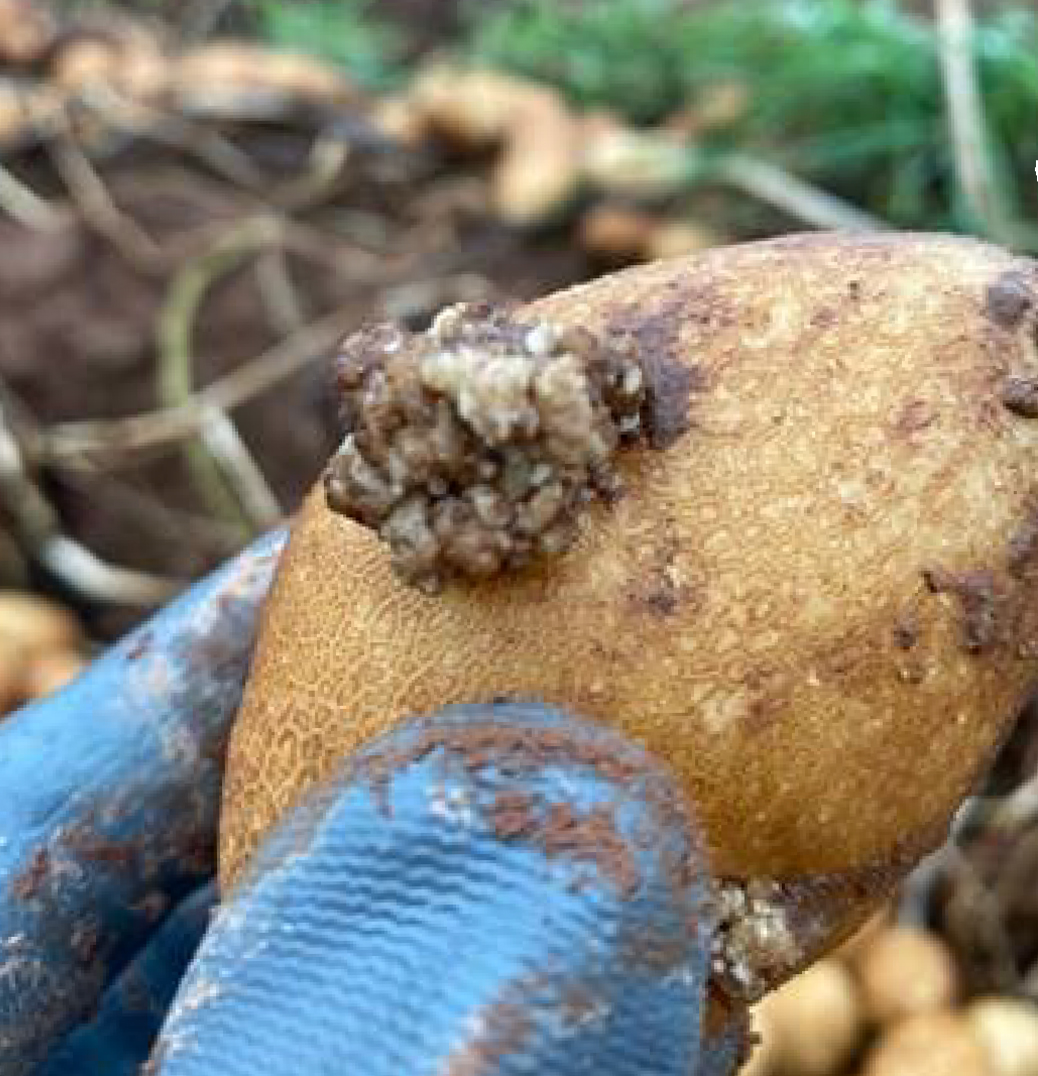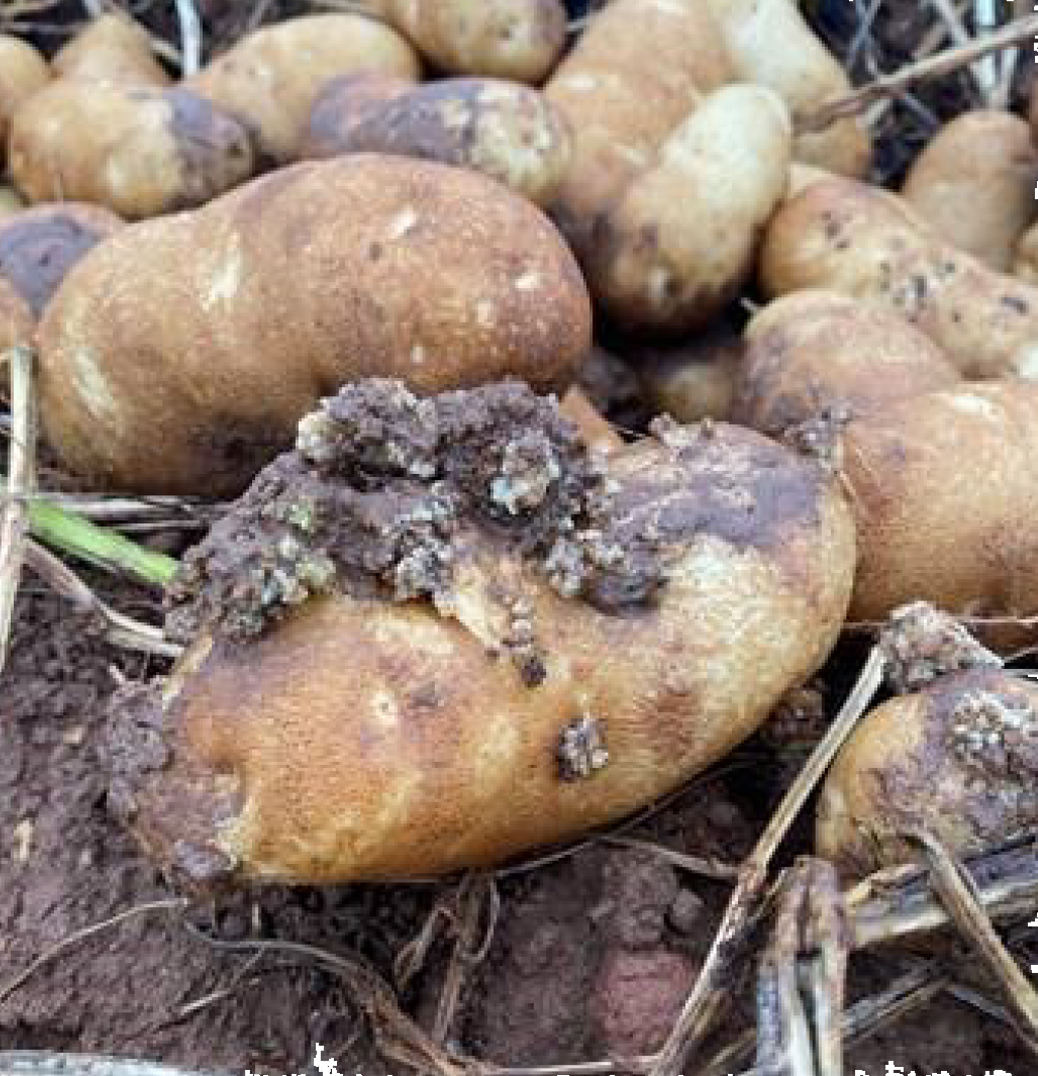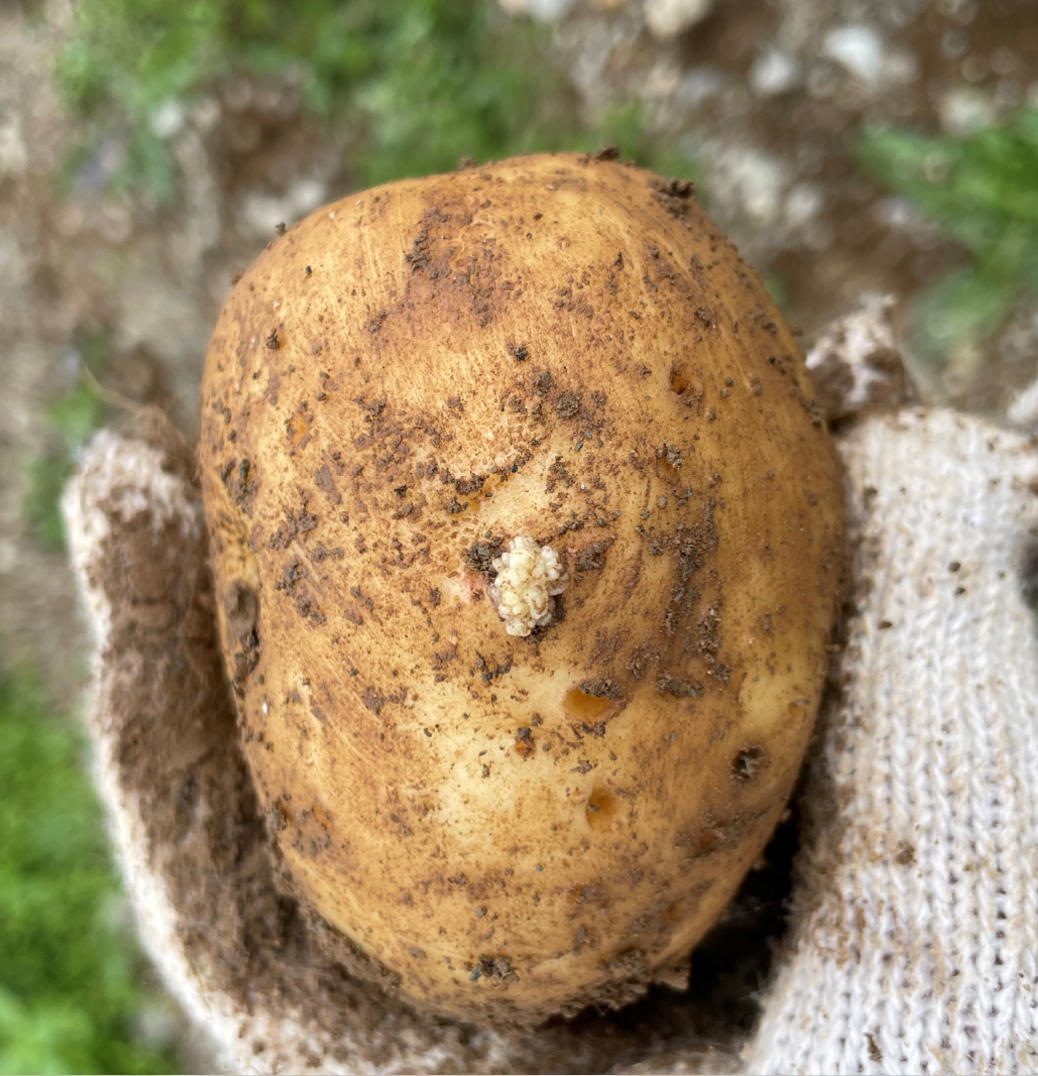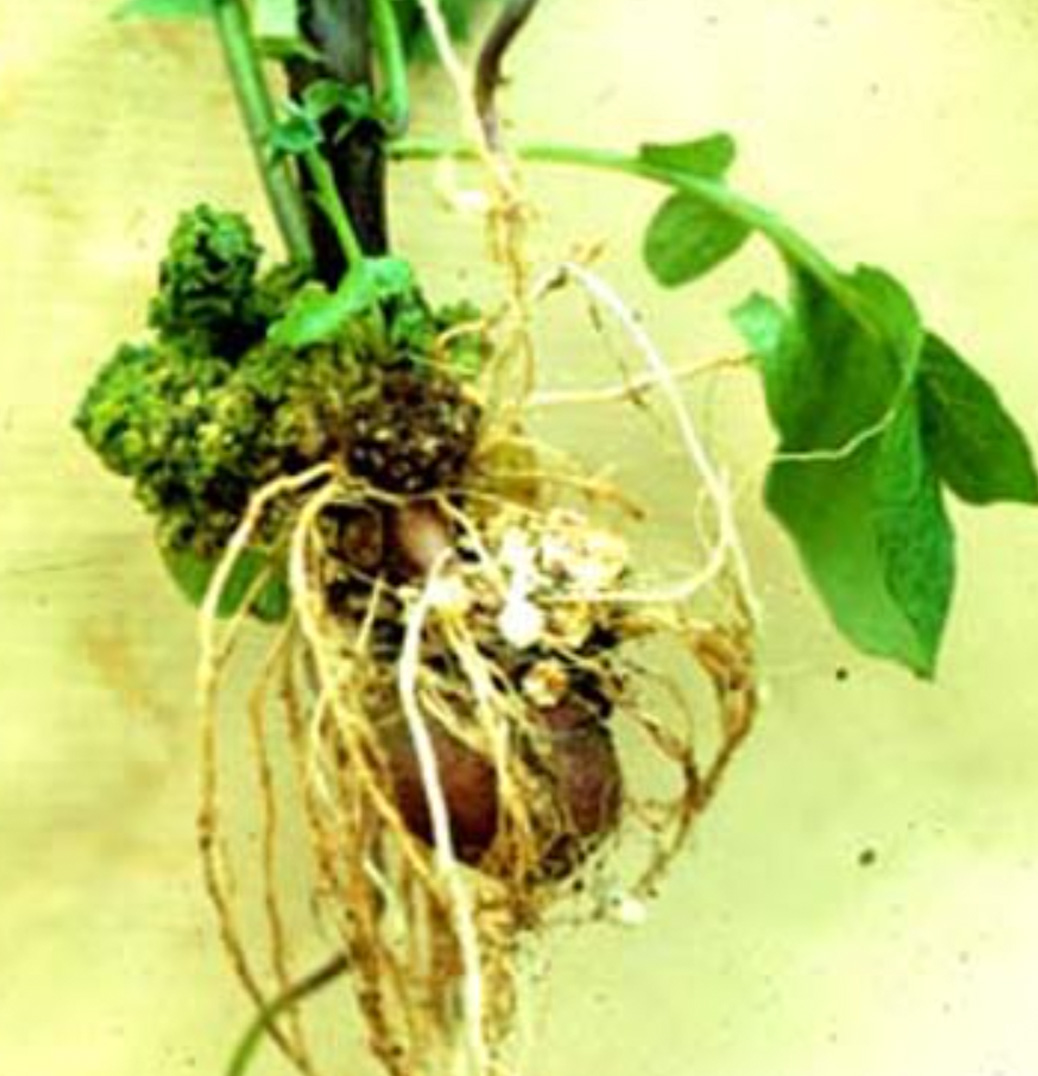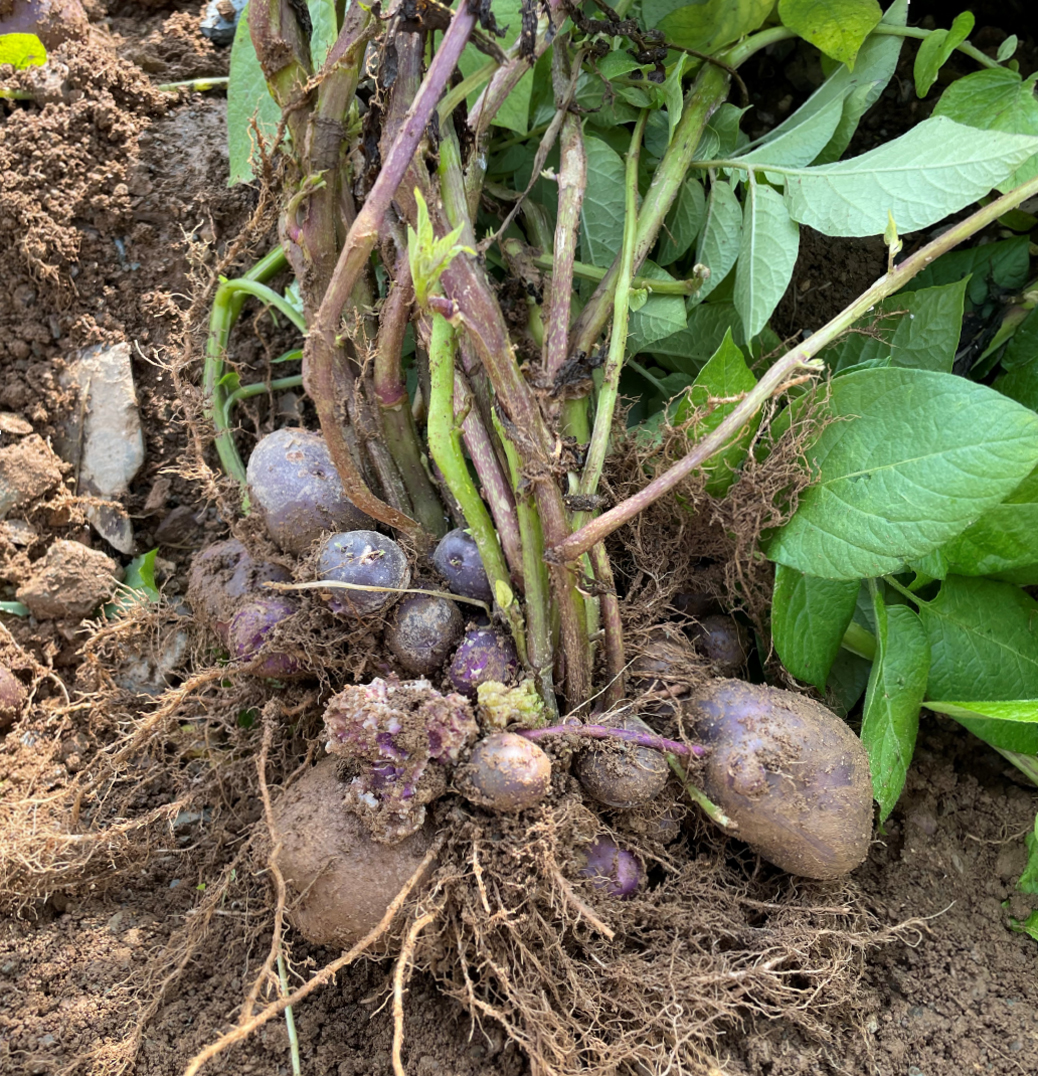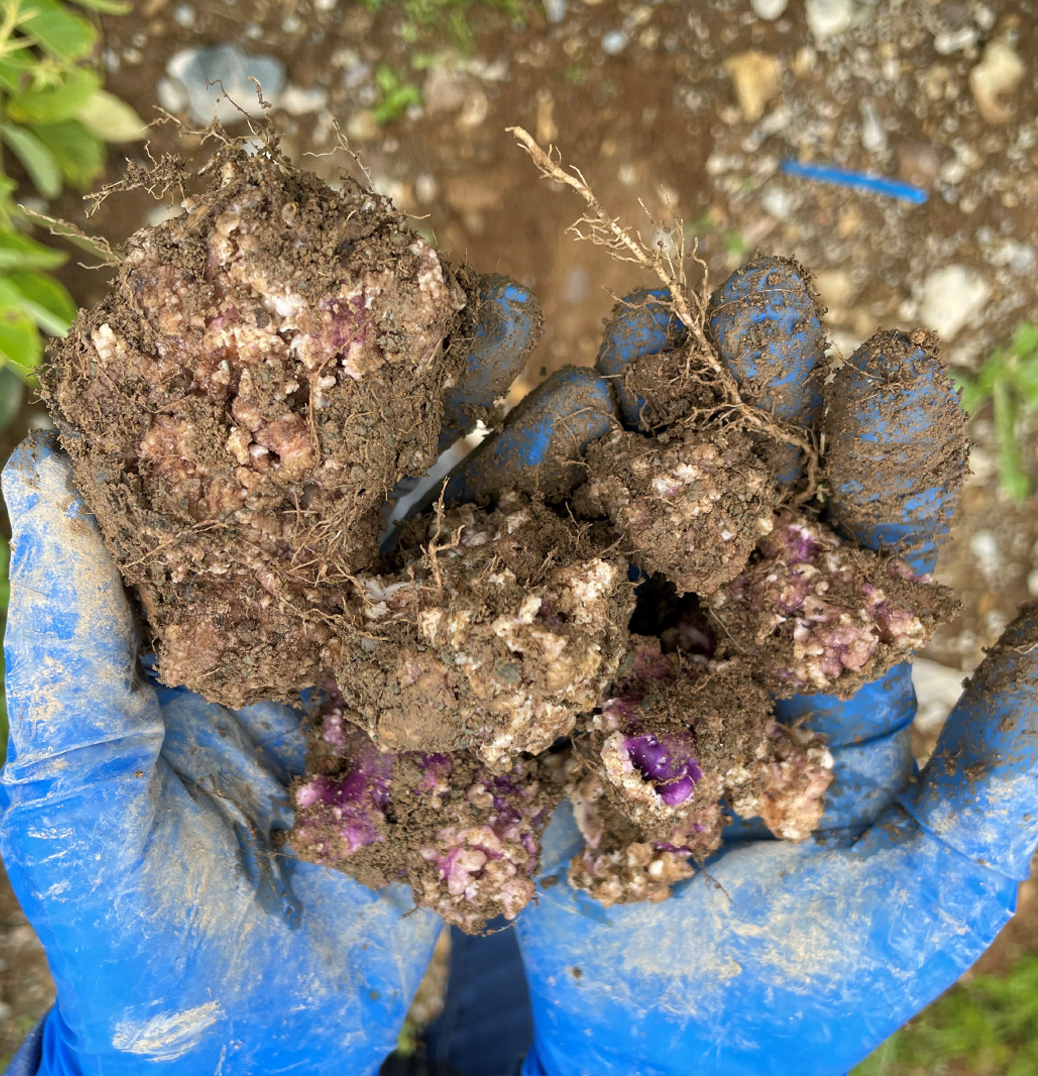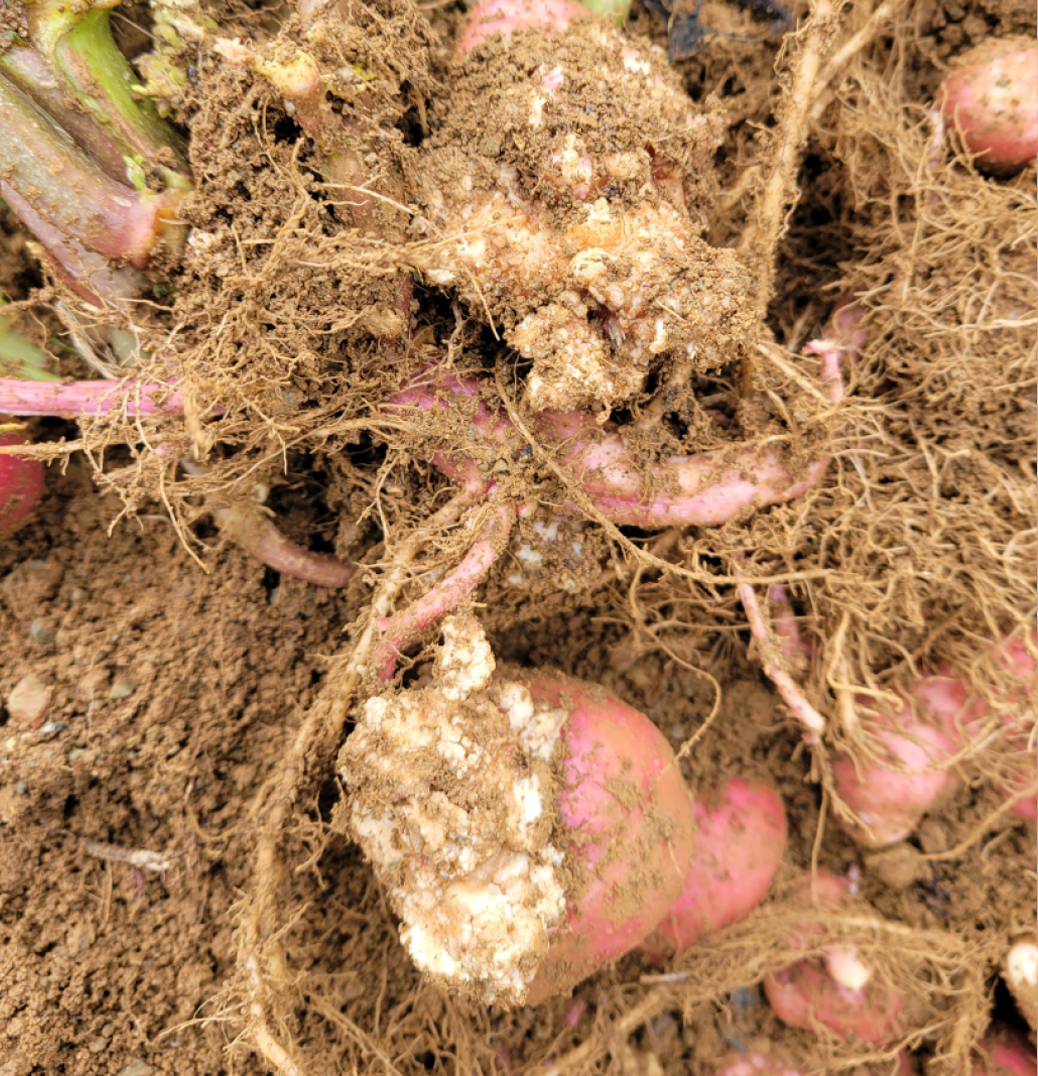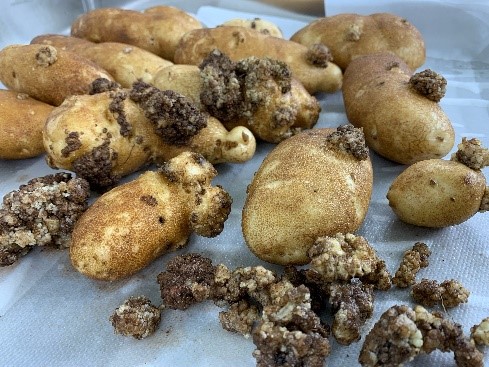
Potato wart (Synchytrium endobioticum), also known as potato canker, is a soil-borne fungus that attacks potato plants. It deforms the tubers and reduces crop yield. Potato wart does not pose a risk to either humans or animals.
Potato wart is a regulated pest in Canada.
If you think you have found potato tubers which may be showing signs of a potato wart infection, report it immediately.
Report a finding of potato wart
Where it is found
In Canada, potato wart was first found in Newfoundland and Labrador in 1909 and is present mainly in backyard gardens in the province. In 2000, the disease was found in a commercial potato field in Prince Edward Island.
Learn more about the work that CFIA is doing to help contain, control, and prevent the spread of potato wart in Prince Edward Island.
Potato wart is found in these countries:
- North America: In addition to Canada, the fungus had been present in the United States (Pennsylvania, West Virginia, Maryland) but has been declared eradicated
- South America: Bolivia, Falkland Islands, Peru
- Europe: Belarus, Bulgaria, Czech Republic, Denmark, Estonia, Faroe Islands, Finland, Germany, Greece, Ireland, Italy, Luxembourg, Montenegro, Netherlands, Poland, Romania, Russia, Slovakia, Sweden, Ukraine, the United Kingdom
- Asia: Armenia, Bhutan, China, Georgia, India, Nepal, Turkey
- Africa: South Africa, Tunisia
- Pacific: New Zealand
Which plants are affected
Potatoes (Solanum tuberosum) are the only crop that is attacked by potato wart. Tomatoes can also become mildly infected in rare cases, but the disease has never been reported to occur in commercial tomato crops. Some wild Solanum species (weeds) can also become infected by the fungus.
What to look for
On potato plants, the disease appears mostly on underground plant parts, except the roots. Stems, stolons (runners), and tubers can all become infected when the fungus is present in the soil. The infection leads to the formation of abnormal lumpy growths, known as galls or "warts", from which the disease gets its name. A slight reduction in overall plant health may sometimes be seen in infected plants.
On potato tubers, or where the plant stem meets the ground, look for the following signs:
- Warts that vary in size, from very small to very large
- Wart surfaces that resemble the head of a cauliflower, although heavily infected tubers can become almost unrecognizable
- Warts on tubers that are initially white in colour
- Green warts on plant stems that are near the soil
- Warts that darken in colour and begin to rot as they become older
About its biology
Potato wart survives in the soil as hardy, microscopic structures called resting spores. Resting spores develop inside the warts that grew on a previous potato crop grown in an infested field. During harvest, wart pieces can break off of infected tubers in the field or infected tubers can remain in the ground unharvested. As the wart pieces or warted tubers left in the ground decay during the winter months, tens of thousands of individual spores are released into the soil, ready to infect the next potato crop. Once these spores are present in a field, they can remain there, alive, for more than 40 years.
In the spring, when temperatures are cool and there is sufficient moisture in the soil, the hardy resting spores germinate to release their contents. Each individual resting spore contains 200-300 tiny mobile zoospores (cells). Zoospores get carried very short distances within the soil water to reach a nearby potato plant to start a new infection. Once inside the potato plant, the fungus multiplies itself, forming new fresh spores called summer spores. Under ideal weather conditions throughout the growing season, the summer spores germinate and re-infect the same potato plant. This cycle of infection and re-infection may be repeated for as long as weather conditions are suitable. The more often this cycle repeats itself during the summer, the larger the warts become, resulting in their characteristic cauliflower-like appearance.
During late summer, when there is typically a water shortage, the fungus stops producing summer spores and instead begins to produce more long-lived resting spores. These remain embedded inside the newly formed warts, thus completing the life cycle.
The disease can be spread by infected seed potato tubers (used to plant a new crop of potatoes) which may have small undetected warts, or in the contaminated soil which remains attached to unwashed tubers or farm equipment. The hardy resting spores can survive digestion by animals fed infected tubers and, therefore, can be spread by manure.
